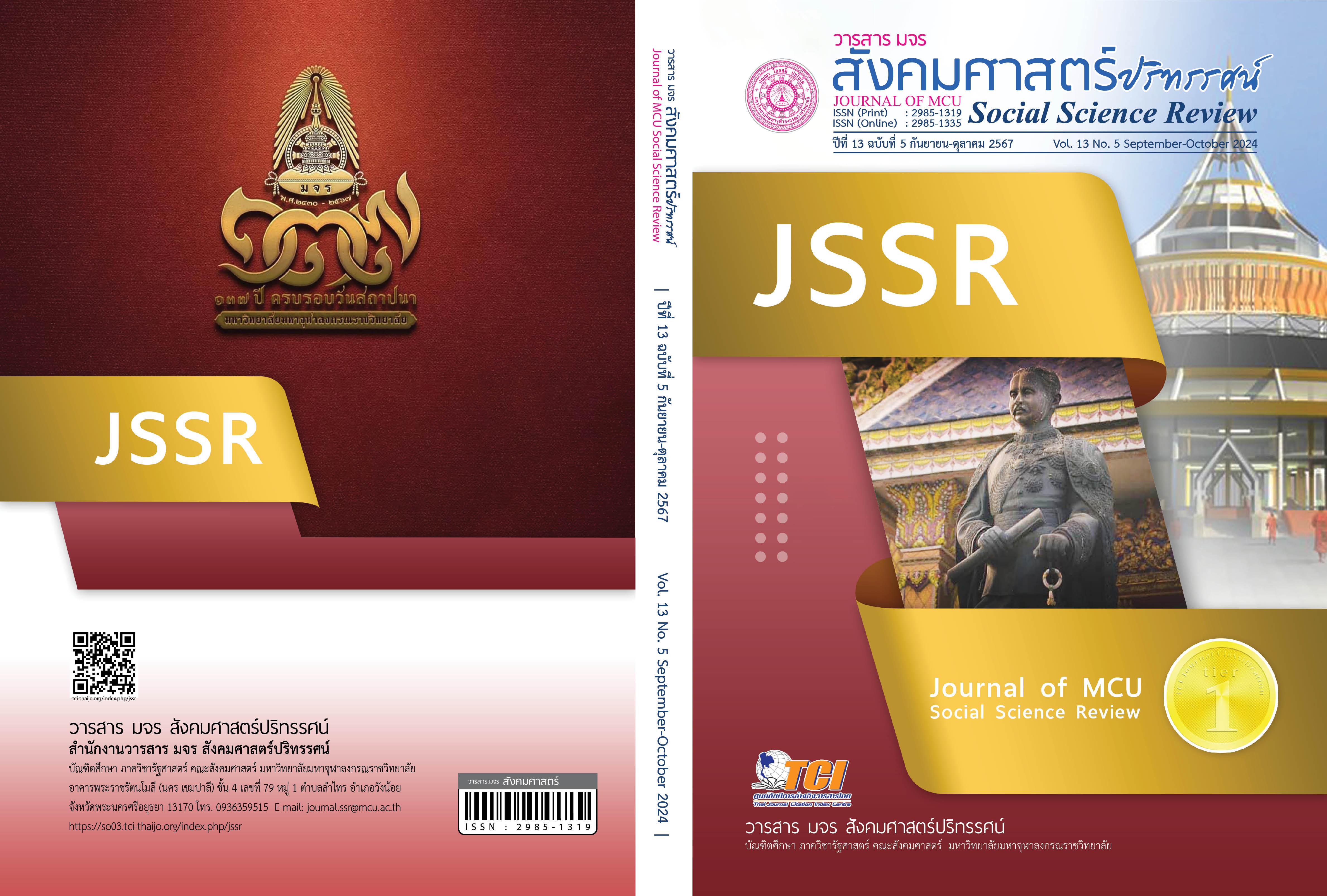การศึกษาเชิงเปรียบเทียบของประเทศกำลังพัฒนาในอาเซียน เพื่อเพิ่มผลิตภาพระดับชาติ
คำสำคัญ:
ผลิตภาพระดับชาติ, ทุนมนุษย์, การวิจัยและพัฒนา, อาเซียนบทคัดย่อ
บทความวิจัยนี้มีวัตถุประสงค์ 1. ศึกษาปัจจัยหลักที่ส่งผลเชิงบวกต่อความสัมพันธ์กับผลิตภาพของประเทศ โดยปัจจัยหลักประกอบด้วยดัชนีพัฒนาทุนมนุษย์และงบประมาณด้านการวิจัยและพัฒนา 2. เปรียบเทียบลักษณะความสัมพันธ์ของปัจจัยหลักดังกล่าวในแต่ละกลุ่มประเทศ เพื่อให้ทราบถึงทิศทางในการพัฒนานโยบาย โดยการวิจัยเป็นแบบ
เชิงปริมาณและใช้เครื่องมือทางสถิติคือการวิเคราะห์สหสัมพันธ์กับข้อมูลทุติยภูมิ 3 ตัวแปร คือ ดัชนีพัฒนาทุนมนุษย์ ร้อยละด้านการวิจัยและพัฒนาต่อผลิตภัณฑ์มวลรวมประชาชาติ และผลิตภาพระดับชาติ โดยการวิจัยได้แบ่งกลุ่มประเทศเป็น 3 กลุ่มคือ 1. กลุ่มรายได้ปานกลางระดับต่ำ 2. กลุ่มรายได้ปานกลางระดับสูง และ 3. กลุ่มรายได้สูง
ผลการวิจัยพบว่า การพัฒนาทุนมนุษย์และการวิจัยและพัฒนาเป็นปัจจัยที่สนับสนุนให้เกิดการเพิ่มผลิตภาพระดับชาติ และมีข้อค้นพบใหม่ว่าการพัฒนาทุนมนุษย์ต่างมีความสัมพันธ์ซึ่งกันและกันในเชิงบวกกับการวิจัยและพัฒนาอย่างสูงในกลุ่มที่ 2 และ 3 แต่ในกลุ่มที่ 1 มีความสัมพันธ์ที่แตกต่างออกไป คือ การวิจัยและพัฒนามีผลเชิงบวกที่น้อยกับทั้งสองตัวแปร ดังนั้นประเทศกลุ่มที่ 1 จะต้องทำนโยบายให้สอดคล้องกันในการให้งบประมาณด้านการวิจัยและพัฒนา เพื่อให้เกิดความสัมพันธ์เชิงบวกอย่างสูงกับทุนมนุษย์และยกระดับผลิตภาพระดับชาติในระยะยาวต่อไป
เอกสารอ้างอิง
Bloom, N. & Van, R. J. (2010). Why do management practices differ across firms and countries?. Journal of economic perspectives, 24(1), 203-224.
De La Fuente, A. (2011). Human capital and productivity. Nordic Economic Policy Review, 2(2), 103-132.
Del, G. M. et al. (2011). Measuring productivity. Journal of Economic Surveys, 25(5), 952-1008.
Djellal, F. et al. (2003). Revising the definition of research and development in the light of the specificities of services. Science and public policy, 30(6), 415-429.
Gennaioli, N. et al. (2013). Human capital and regional development. The Quarterly journal of economics, 128(1), 105-164.
Gidwani, B. D. & Dangayach, G. S. (2017). Productivity measurement and improvement-an overview. International Journal of Productivity and Quality Management, 20(3), 316-343.
Griliches, Z. (2000). R&D, education, and productivity: A retrospective. London: Harvard University Press.
Guellec, D. & De La Potterie, B. V. P. (2002). R&D and productivity growth: panel data analysis of 16 OECD countries. OECD Economic studies, 2001(2), 103-126.
Han, J. S. & Lee, J. W. (2020). Demographic change, human capital, and economic growth in Korea. Japan and the World Economy, 53, 100984.
Leiponen, A. (2012). The benefits of R&D and breadth in innovation strategies: a comparison of Finnish service and manufacturing firms. Industrial and Corporate Change, 21(5), 1255-1281.
Levchengo, A. A. & Zhang, J. (2016). The evolution of comparative advantage: Measurement and welfare implications. Journal of Monetary Economics, 78(1), 96-111.
Madden, G. & Savage, S. J. (2000). R&D spillovers, information technology and telecommunications, and productivity in ASIA and the OECD. Information Economics and Policy, 12(4), 367-392.
Nafukho, F. M. et al. (2004). Human capital theory: Implications for human resource development. Human Resource Development International, 7(4), 545-551.
OECD. (2013). Aggregate National Accounts: Gross domestic product. Retrieved November 15, 2022, from http://dx.doi.org/10.1787/data-00001-en
Phusavat, K. et al. (2012). Intellectual capital: national implications for industrial competitiveness. Industrial Management & Data Systems, 112(6), 866-890.
Roper, S. et al. (2004). An ex ante evaluation framework for the regional benefits of publicly supported R&D projects. Research policy, 33(3), 487-509.
Roser, M. (2014). Our World in Data. Retrieved November 15, 2022, from https://ourworldindata.org/human-development-index
Setyadi, S. et al. (2020). Human Capital and Productivity: a Case Study of East Java. Economics Development Analysis Journal, 9(2), 202-207.
United Nations Development Programme. (2022). Human Development Index (HDI). Retrieved December 15, 2022, form https://hdr.undp.org/data-center/human-development-index#/indicies/HDI
World Bank. (2022). GDP per capita. Retrieved December 15, 2022, form https://data.worldbank.org/indicator/NY.GDP.PCAP.CD
_____. (2022). Research and development expenditure (% of GDP). Retrieved December 15, 2022, form https://shorturl.asia/0DkPF
ดาวน์โหลด
เผยแพร่แล้ว
รูปแบบการอ้างอิง
ฉบับ
ประเภทบทความ
สัญญาอนุญาต
ลิขสิทธิ์ (c) 2024 วารสาร มจร สังคมศาสตร์ปริทรรศน์

อนุญาตภายใต้เงื่อนไข Creative Commons Attribution-NonCommercial-NoDerivatives 4.0 International License.
เพื่อให้เป็นไปตามกฎหมายลิขสิทธิ์ ผู้นิพนธ์ทุกท่านต้องลงลายมือชื่อในแบบฟอร์มใบมอบลิขสิทธิ์บทความให้แก่วารสารฯ พร้อมกับบทความต้นฉบับที่ได้แก้ไขครั้งสุดท้าย นอกจากนี้ ผู้นิพนธ์ทุกท่านต้องยืนยันว่าบทความต้นฉบับที่ส่งมาตีพิมพ์นั้น ได้ส่งมาตีพิมพ์เฉพาะในวารสาร มจร สังคมศาสตร์ปริทรรศน์ เพียงแห่งเดียวเท่านั้น หากมีการใช้ภาพหรือตารางหรือเนื้อหาอื่นๆ ของผู้นิพนธ์อื่นที่ปรากฏในสิ่งตีพิมพ์อื่นมาแล้ว ผู้นิพนธ์ต้องขออนุญาตเจ้าของลิขสิทธิ์ก่อน พร้อมทั้งแสดงหนังสือที่ได้รับการยินยอมต่อบรรณาธิการ ก่อนที่บทความจะได้รับการตีพิมพ์ หากไม่เป็นไปตามข้อกำหนดเบื้องต้น ทางวารสารจะถอดบทความของท่านออกโดยไม่มีข้อยกเว้นใดๆ ทั้งสิ้น





